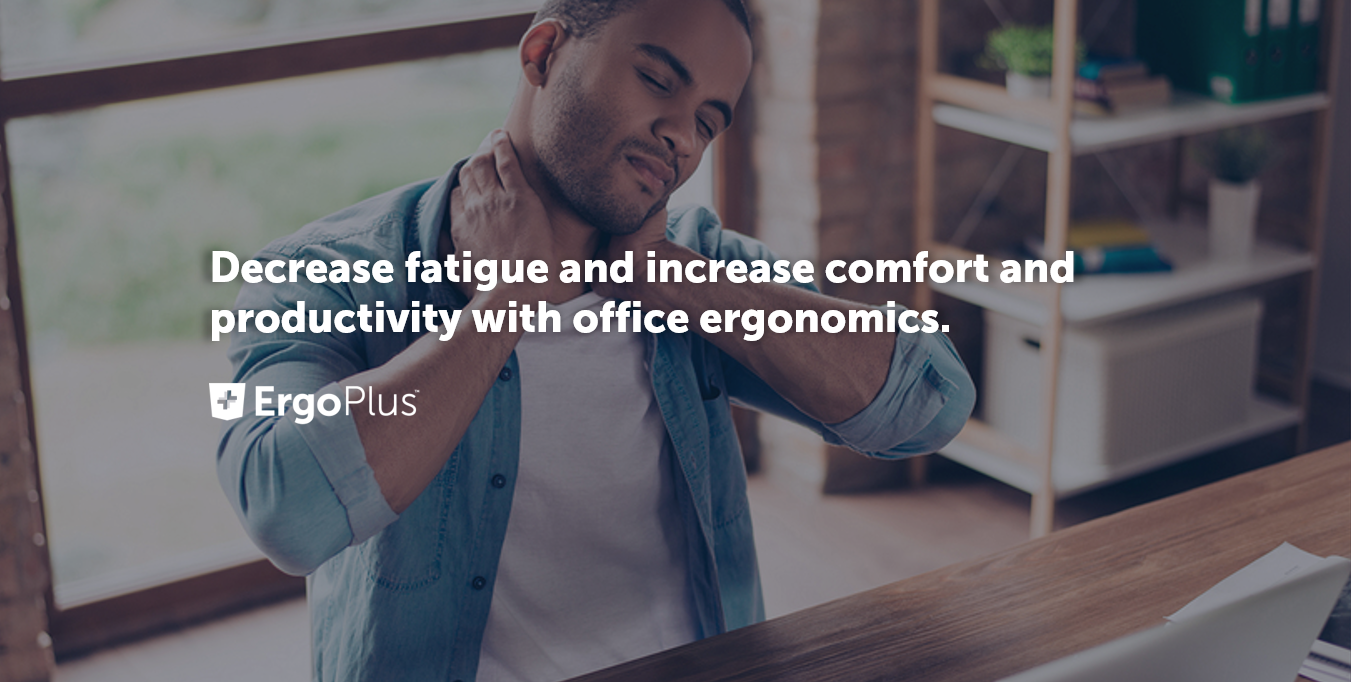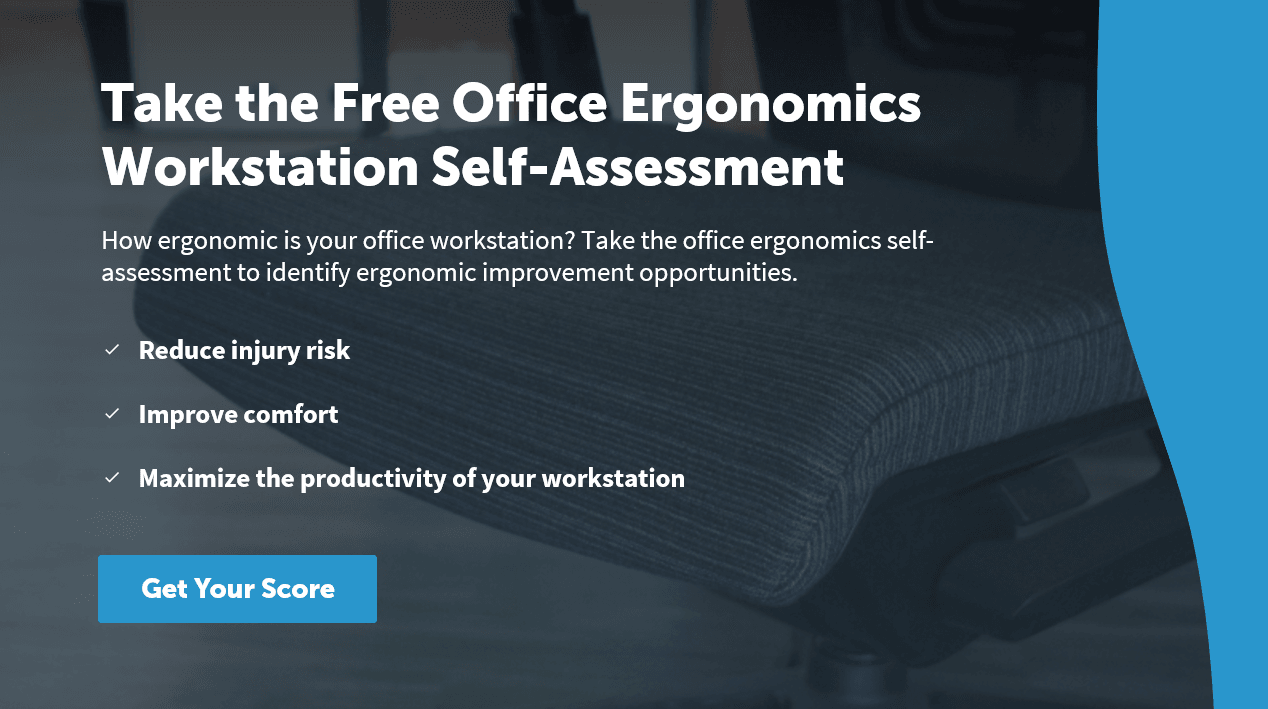Follow these quick and easy office ergonomics tips to decrease fatigue, discomfort and physical stress while also increasing comfort and productivity.
Ergonomics” is the science of designing the workstation to fit within the capabilities and limitations of the worker.
The goal of office ergonomics is to design your office work station so that it fits you and allows for a comfortable working environment for maximum productivity and efficiency.
An ergonomically correct office work station will help you avoid fatigue and discomfort – who doesn’t want that? Whether you’re an OHS professional in charge of providing a safe work environment for the employees at your company or simply a computer user who wants to avoid fatigue, following a few simple guidelines can help you significantly improve your office work station.
Office Ergonomics Tips
Follow these 10 office ergonomics tips to help you avoid fatigue:
1) Make sure that the weight of your arms is supported at all times. If your arms are not supported, the muscles of your neck and shoulders will be crying by the end of the day.
2) Watch your head position, and try to keep the weight of your head directly above its base of support (neck). Don’t “crane” your head and neck forward.
3) Don’t be a slouch! Slouching puts more pressure on the discs and vertebrae of your back. Use the lumbar support of your chair and avoid sitting in a way that places body weight more on one than on the other. Move your chair as close to your work as possible to avoid leaning and reaching. Make sure to “scoot” your chair in every time you sit down.
4) The monitor should be placed directly in front of you, with the top no higher than eye level. The keyboard should be directly in front of the monitor so you don’t have to frequently turn your head and neck.
5) Talking on the phone with the phone receiver jammed between the neck and ear is really bad practice. You know that’s true, so don’t do it!
6) The keyboard and the mouse should close enough to prevent excessive reaching which strains the shoulders and arms.
7) Avoid eye strain by making sure that your monitor is not too close, it should be at least an arm’s length away.
8) Take steps to control screen glare, and make sure that the monitor is not placed in front of a window or a bright background.
9) You can rest your eyes periodically for several seconds by looking at objects at a distance to give your eyes a break.
10) The feet should not be dangling when you are seated. If your feet don’t comfortably reach the floor or there is pressure on the backs of your legs, use a footrest or lower the keyboard and chair.
Take the free Office Ergonomics Workstation Self-Assessment
Properly designed computer workstations help team members feel comfortable and can increase their productivity. Have them go through the free office ergonomics self-assessment and ensure your employees’ workstations are set up correctly.
Bonus: Care for your musculoskeletal system
Avoid fatigue at the office by taking good care of your musculoskeletal system. Drink plenty of water, get plenty of exercise, take stretch breaks and avoid prolonged periods of sitting.

